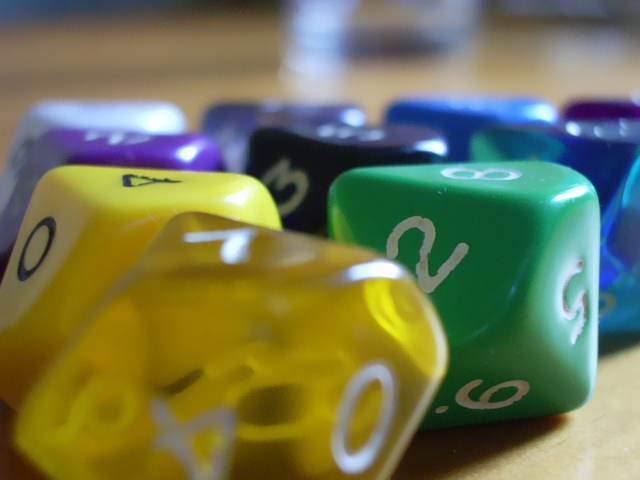I am a big fan of GameScience dice. Most gamers have seen the infamous videos Lou Zocchi made. If you haven’t go ahead and watch part one and part two of the videos. Even if not in agreement you will likely find them entertaining!
There has even been a “roll off” between GameScience dice and Chessex dice which does show a bit of an edge to the GameScience dice.
Regardless of statistical superiority – whether it be true or not – the dice stay on the table better for me due to their precision edges. These days I keep one dice bag full of of my Chessex and other miscellaneous dice and another with my GameScience. My GameScience bag is the one I grab most often.
Inking History
I tend to buy my GameScience dice un-inked. There are numerous articles out there on various inking methods and I have tried several of them. For my initial investment into GameScience dice I bought four sets. Two sets I did with crayon like I did when I was a kid. The other two sets I did with a sharpie marker as described at Jeff Rient’s blog.
I liked the crayon method and the two sets I did that way actually have lasted pretty well. There are some gouges from the wax from mixing with the other dice in the rolls. And some of the GameScience dice have circles around the numbers which I kept getting wax stuck in, giving them a slightly off appearance.
I then did two sets with a sharpie extra fine marker. These went pretty well. A little faster to do this way and they came out looking good. I thought this was going to be my preferred method for future sets. Over time though the marker method seemed to fade. The numbers had less ink in them and they became harder to read. In the past several months the inking job looked pretty bad.
The Inking Experiment
I could have simply redone them with a sharpie. I still have lots of Sharpie markers I could have done the job with. I was looking to experiment a bit. Jobe Bittman over on Google+ mentioned using Sharpie Poster Paint markers of the Extra Fine variety to ink the dice.
Most of the comments mentioned using the water-based ones. But after checking an office supply store, WalMart, and an Art Supply store in town I did not find a water-based version in black. I did found a two-pack of metallic, glitter paint ones, but I did not want to try those on the dice.
Today was the stop at the art supply store. After being directed to the paint marker aisle I saw lots and lots of markers! I still didn’t find a water-based paint marker though. Admittedly I was in a hurry as the family was waiting in the car. I decided to grab the extra fine point Sharpie oil based marker in black and headed to the cash register. The clerk mentioned another marker that could “erase” mis-applied paint. That sounded infinitely useful and I picked one of those up to.
Once getting settled in at home I tried my hand with the new Sharpie marker and seeing if I could fix up my GameScience dice.
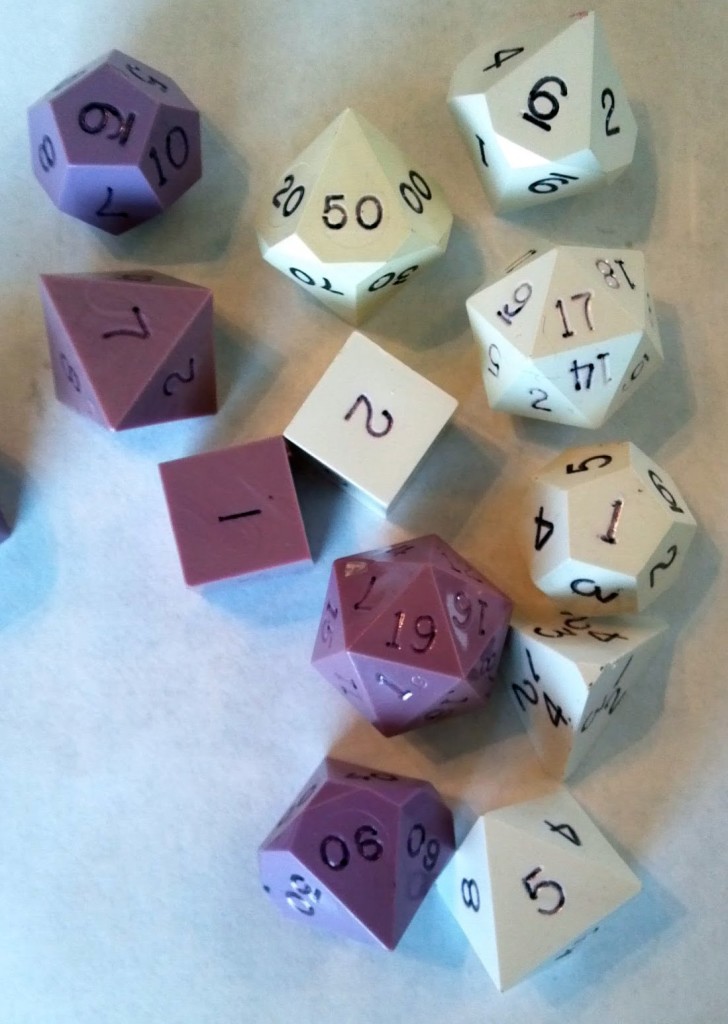
As you can see the 20-siders show the most wear. The original marker is very faded. All faces used to look as solid and bright as the ‘6’ on the ten-sider in the upper right corner.
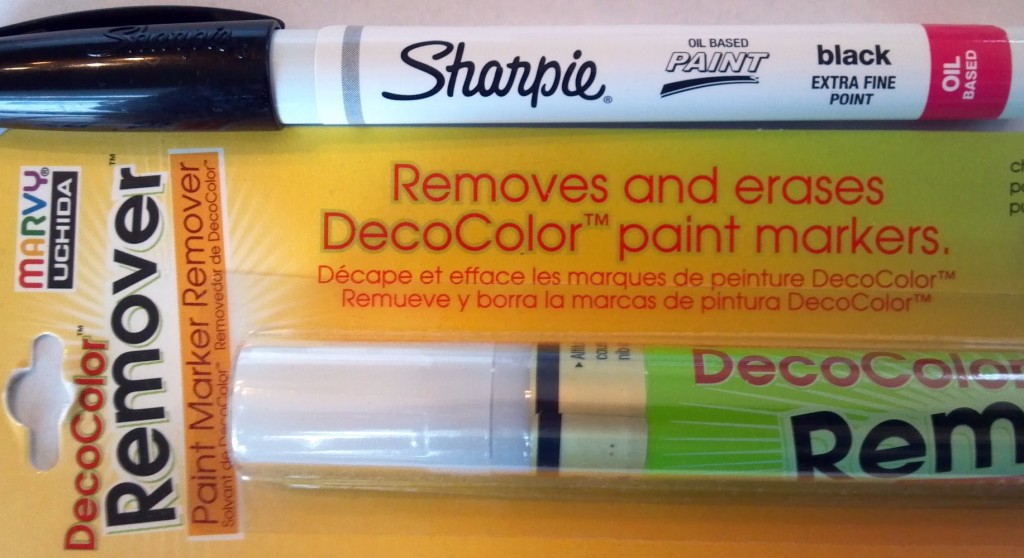
These are the markers I used. The Sharpie is on top, an oil based paint marker. The other is a Paint Marker Remover, chisel tipped. This was for the inevitable mistakes I would make along the way.
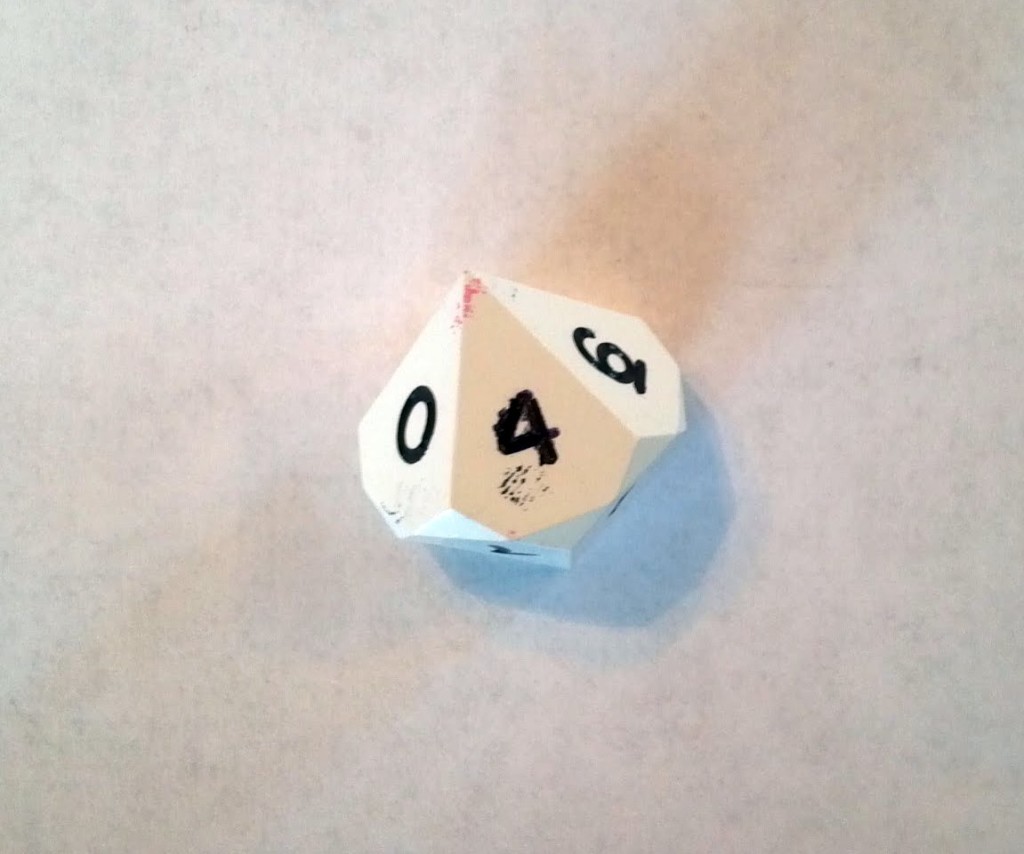
Ooops! Is that a smudge on the ‘4’ and fingerprint in oil-based paint? Yep. This one needs cleaned up.
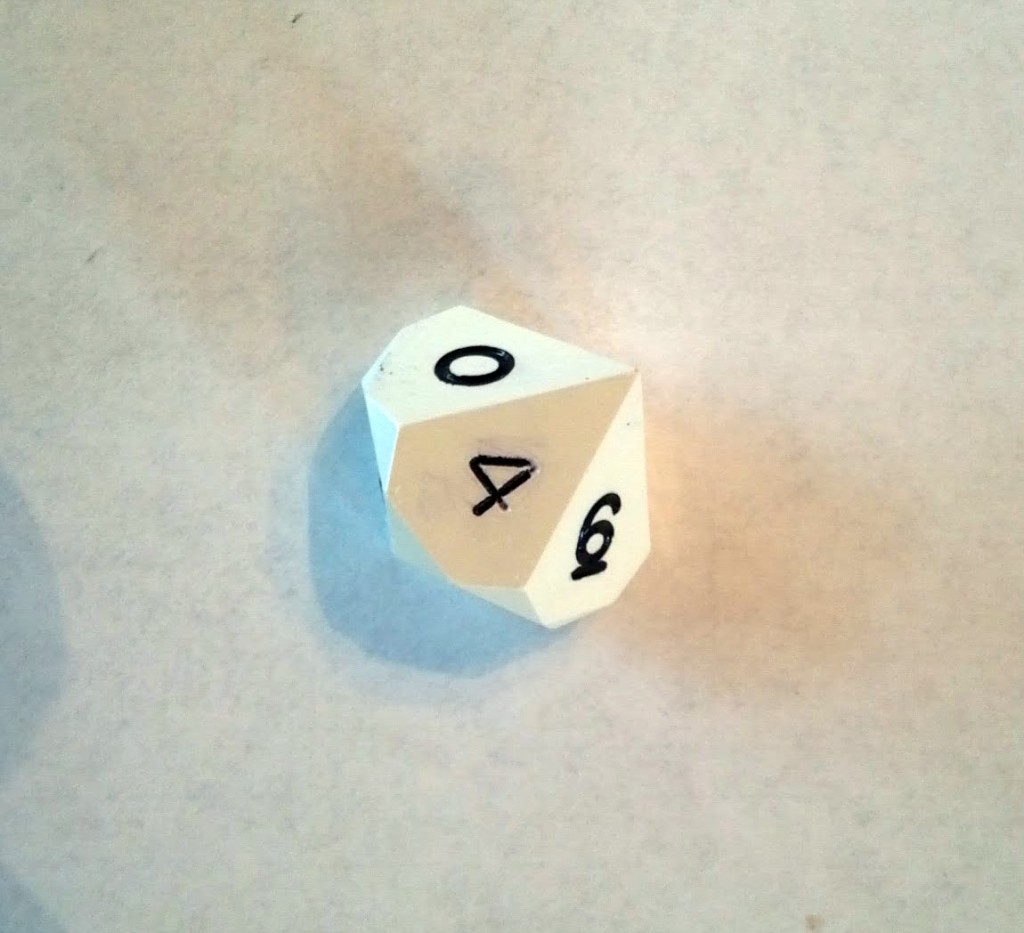
I have run the remover marker over this side of the die. Still a touch of of the smudge visible, but looking better. This side needs re-inked as the remover seeped into the grooves of the ‘4’ during clean-up.
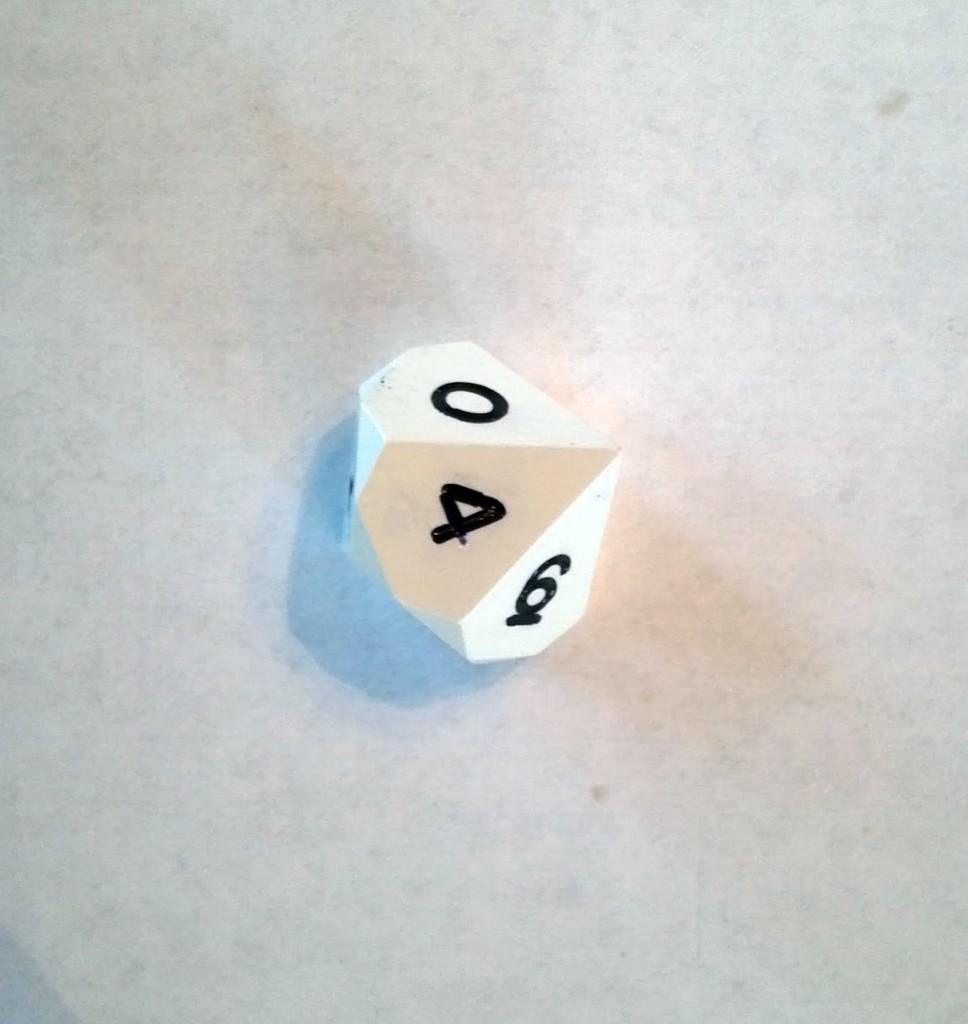
Re-inked now. Not 100% perfect, but much better than the fingerprint on the face. Barely noticeable during play.
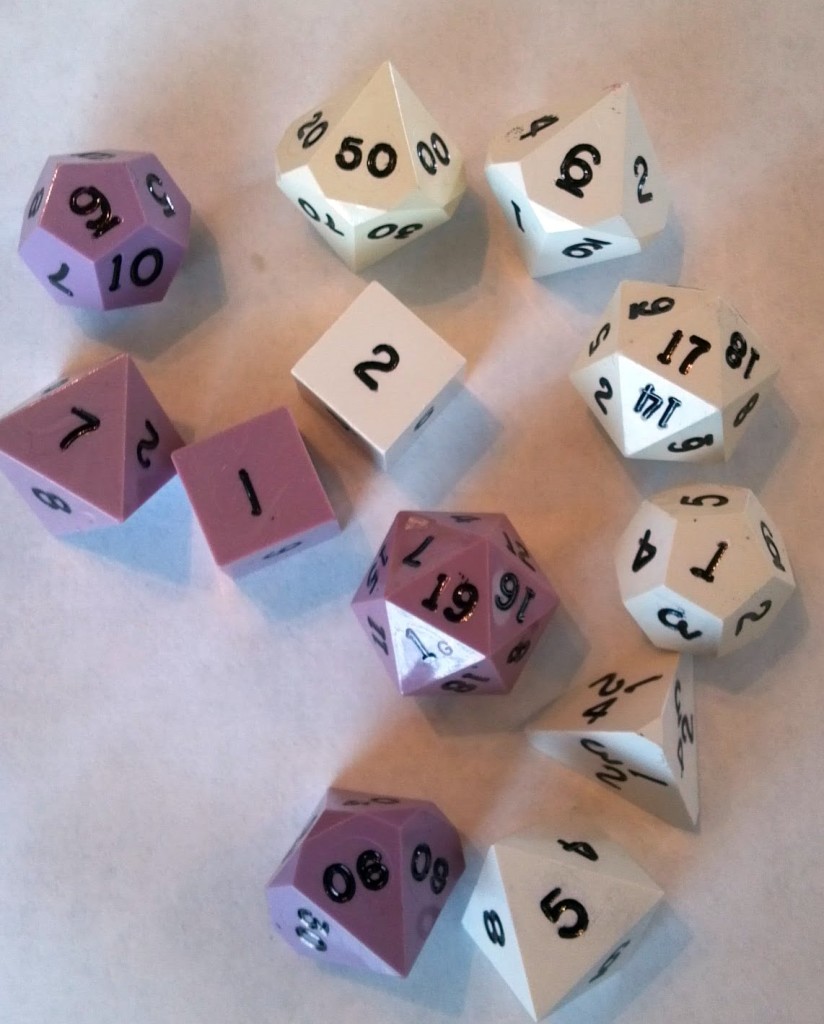
Here are the dice after I re-inked them all. Not 100% perfect when scrutinized, but looking pretty good for table play. When compared to the first photo in the series I think they turned out pretty good.
Results?
I still need to see if I can clean things up a little more, but overall I am pretty happy with how things turned out. They aren’t perfect, but in comparison to my other inking jobs they are in the same ballpark as far as smudging or imperfections of my workmanship. Time will tell how they hold up, being oil-based paint I suspect it lasts much, much longer before showing signs of wear.


